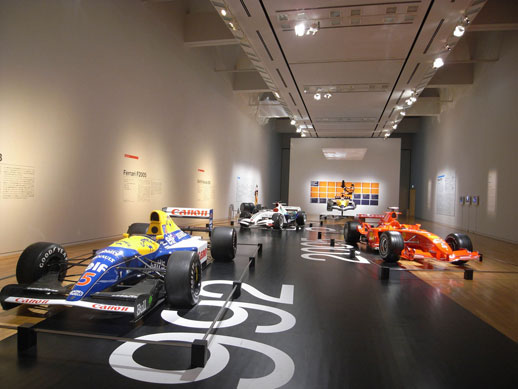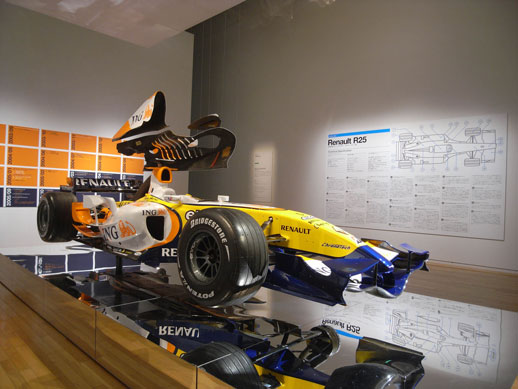And They’re Off!
Considering that Formula One is one of the world’s most popular sports, the Tokyo Opera City Gallery has a summer blockbuster on its hands with “Formula One: The Great Design Race.”
Like many of the arts, Formula One has a long association with a few of the “civilized” world’s vices: namely speed, gambling, and controversial corporate sponsorship — all of which happen to be key elements of a blockbuster. And like any top prize, the quintessential grand prix has attracted a century’s worth of the best designers in the field, not to mention the top engineers, drivers, and whole teams of unsung experts in obscure specializations like tire-changing.

The opening section, “100 Years of Grand Prix Racing” does a thorough job showcasing the work of the designers who have shaped the last century of this sport, with vintage cars still sporting race-worn tires, photos of drivers in the eyewear of the ages, and tattered VIP passes among the many artifacts on display. Here we can see how the race cars of the 1950s, exemplified by the beautiful, bullet-shaped forest green 1959 Cooper, evolved into the alien, insect-like, but no less striking, Renault R25, plus a few other sexy examples in between.
From here, however, the exhibition unravels into a few loose tangents: an in-depth look at the construction of the R25, a few random videos of F1 highlights past and present, and finally a look at the role of Japanese engine and tire manufacturers, Honda and Bridgestone, respectively. This last section, with somewhat heavy-handed descriptions of the persevering Japanese companies, lends a local flavor, though has a compromising effect on the international spirit conveyed in the rest of the exhibition.

With technical thrills, a human element, and plenty of automotive eye candy “The Great Design Race” courts a broad audience. Die-hard race fans will get a kick out of seeing engine parts displayed at a mainstream gallery usually reserved for paintings and the like, as opposed to, say at a transit museum. Meanwhile those curious about the overwhelming international appeal of the sport are offered a solid introduction, enough even to inspire them to check out a race. It is unfortunate, therefore, that like the aforementioned summer blockbuster, the plots are a little too loosely strung together, and the ending a bit flat — overall, the exhibition fails to make the kind of impression likely to last beyond the season.
Rebecca Milner
Rebecca Milner



